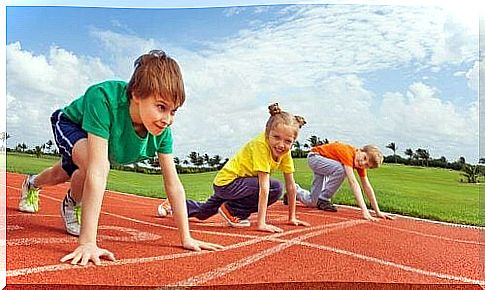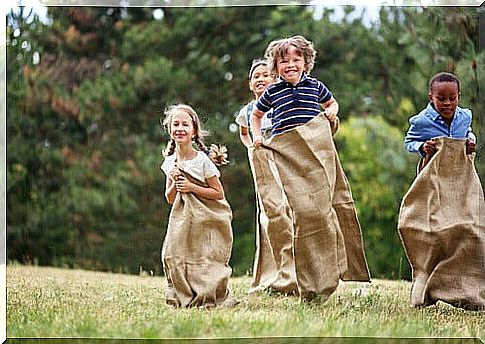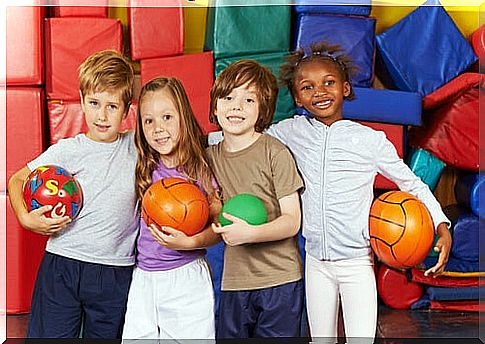Why Are Speed Games Good?

Speed games are much more than just a distraction. Increasing speed means effort, intelligence and strength in every movement. Therefore, it is always good that our little ones have spaces to walk or run quickly.
From this perspective, preventing children from running could negatively influence their abilities. On the contrary, if we let them exercise in the right place and in the right way, they will be able to develop better.
It is the same as what happens in sport: only practice under conditions of difficulty and effort generates physical improvements. It is not about letting them run around the living room, between the TV and the furniture; much better to exercise outdoors.
What are speed games?
As its name implies, we refer to activities in which speed is necessary to be able to fulfill a certain objective. It will be this skill that helps children to win, get prizes or function during the game.
Logically, almost all of these activities involve some level of competition. This can be against other children, but also with parents, the timer or even with respect to themselves.
Of course, it is not just about running around uncontrollably. Increasing speed involves strength, effort, intelligence and technique, among other things. Therefore, when these exercises are performed, the abilities of the little ones are increased.
Building improvement through speed
The processes of physical evolution are very beneficial. Sometimes the children themselves find they are going faster in the middle of their career. Parents and physical education teachers can also see the progress in each boy or girl.

When there is a problem, it can also be corrected. Sometimes our little ones don’t reach high speeds because they have technical drawbacks . If we adults analyze the failures and indicate the correct postures and techniques, we can help them improve.
You can even work on anomalies, such as the continuity of the falls. An experienced physical education teacher may even realize that a child needs corrective glasses or templates. This revision work will only bring benefits in the little ones.
Benefits of speed games
Planning activities so that little ones can run and act quickly generates the following benefits:
- Conditioning of the respiratory and cardiovascular system from youth.
- Improvements in muscle tone.
- Development of strength.
- Review of possible failures in the technique that the child may have.
- Reduction of reaction times to external stimuli.
- Psychomotor development and coordination.
- Internalization of one’s own abilities and also of the deficiencies in the performance of routines and common tasks.
The best-known game of speed is racing, in which the little ones measure themselves to see who comes first. In the middle of the competition, they strive to overcome the conditions of the rest of the children.
However, this is just one of many that exist. Along with racing competitions, there are other planned activities that are much more demanding.
We could make a division between racing and other competitions that require greater efforts. For example, the popular tests of the yincanas are part of this second group.

Some popular speed games
Children play all the time by means of speed. In fact, they do it without realizing it and push their limits in the middle of activities. Here are some examples that are sure to sound familiar:
- Sack race: in them, you must reach the goal quickly, but through jumps. Each jump must be coordinated and made covering the most lake route possible; the kids will have to keep their balance to avoid falling.
- Paired races with mooring: there are many types of fast paired competitions. In some, the children are tied up and must coordinate the race between them. Not only work coordination and agility, but the ability to work as a team.
- Obstacle competitions: Obstacles increase the level of difficulty, because to overcome them you need much more than running. Here the arms are used, the waist and different joint movements are also performed.
It is clear that, in this type of test, not only physical development is stimulated. A good part of the competitions require attention, concentration and other mental operations. Our children work body and mind when they play speed games.










